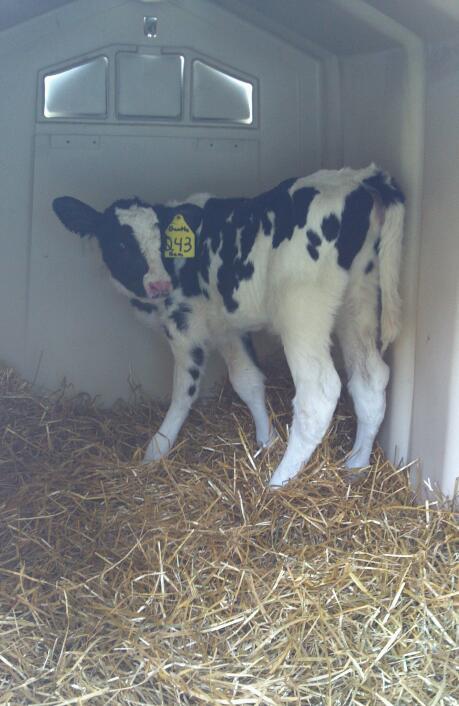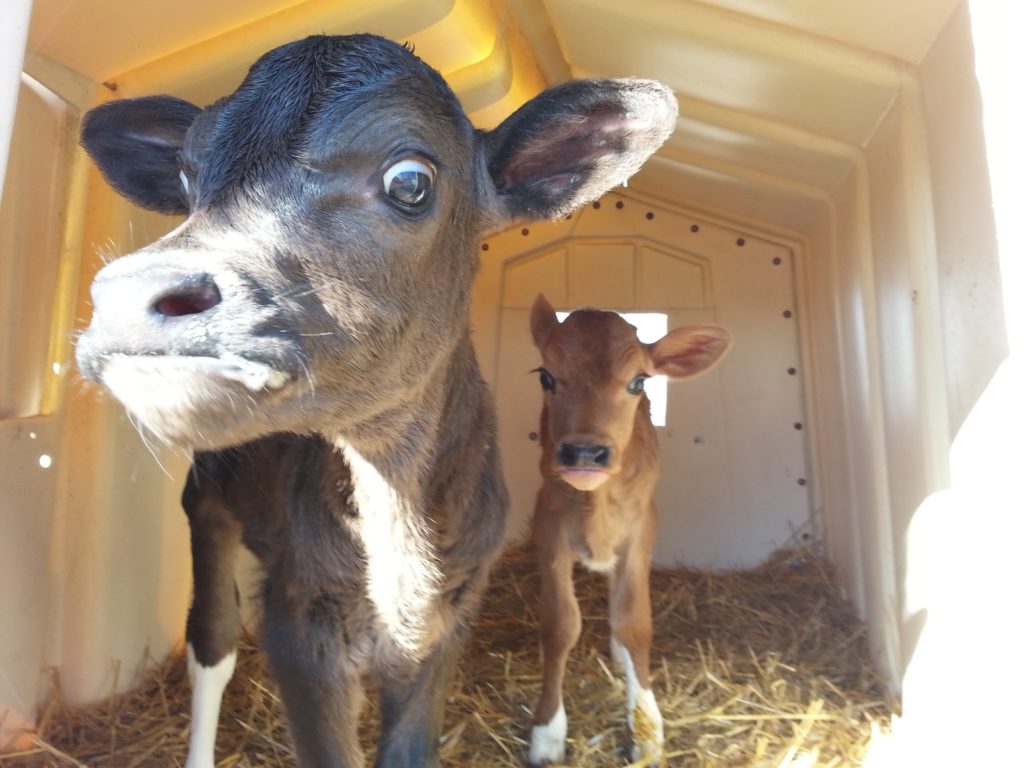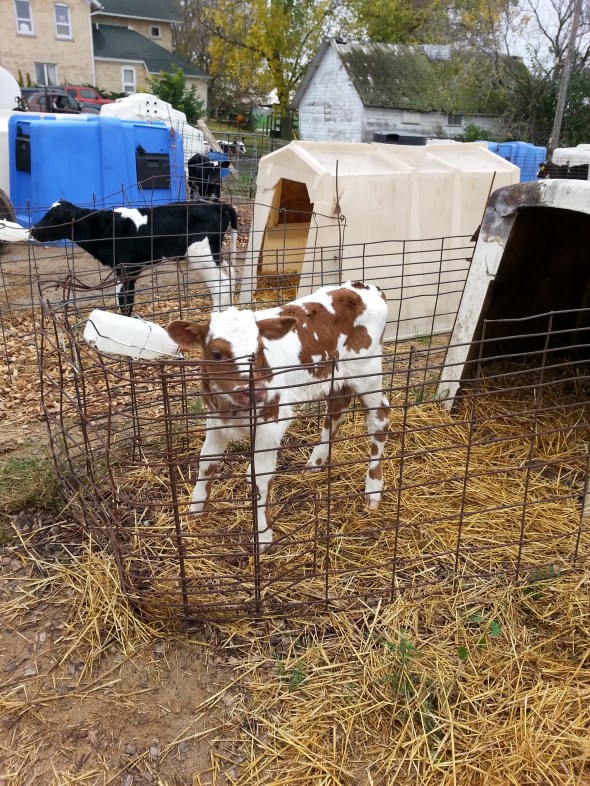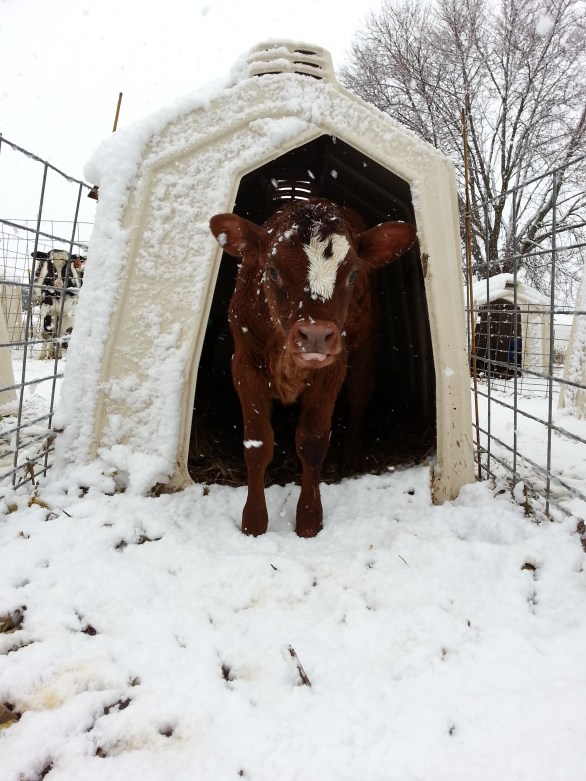It is an undeniable fact that much of the food we consume is animal meat. But even though most of us are familiar with the types of animals we typically eat — cow, pigs, chickens, fish — comparatively few consumers have much familiarity with the processes involved in animal food production: where those animals come from, how they're raised, what they're fed, the conditions under which they live, how they're slaughtered, etc. Animal rights activists often post pictures and videos online to try to call public attention to some food animals who live and die in appallingly inhumane conditions, but an item about the housing of calves raised for veal production, however well-intentioned, is woefully inaccurate:
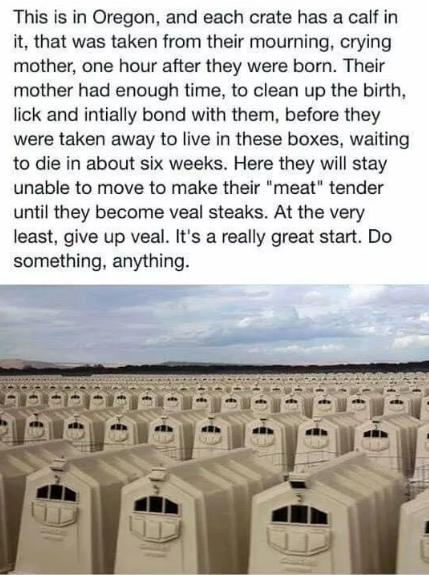
What's pictured here are not crates in which calves are imprisoned within an hour of their birth, condemned to spend their entire lifespans stuffed into little boxes that don't even provide them enough room to turn around in order to keep their meat "tender" before they're marched off to slaughter after only six weeks. (Veal calves are typically raised for 16 weeks, not six.) This photograph actually shows calf hutches that are used to house calves being raised for dairy (not veal) purposes, and those hutches provide plenty of room for calves to turn around and as well as attached runs so that the calves can spend time outdoors:
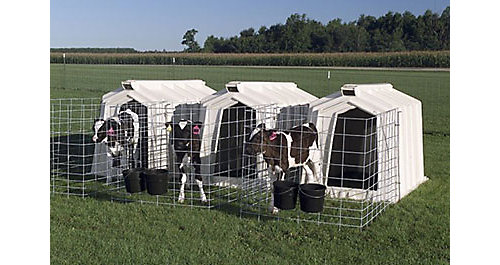
As a post on the Heim Dairy Farm's blog explained, dairy farmers house calves in hutches for the first eight weeks of their lives for several reasons, including to protect the calves from illness, shelter them from weather, and better monitor their development:
The many benefits of housing calves separately can be summarized simply as management. Individual housing allows us to know exactly what is going in and coming out of each calf. This helps us monitor their development as well as identify illness. This may surprise you, but most of our calves can't talk (ok, none of our calves can talk). The most common signs that a calf isn't feeling well are loose manure, called "scours", or lack of appetite. Individual housing allows us to know quickly and certainly which calf is scouring or not eating. We can then give that calf the extra attention and treatment that she needs.
Sick calves bring me to the next reason for individual housing. Kind of like kids at day care, calves in groups can spread illness to each other pretty quickly. Keeping a calf separated from her peers early in life, while her immune system is developing, limits her exposure to bacteria other than her own and therefore reduces the risk that she will get sick. Each of our calves is given their own plastic hut with their own hog panel (3' fence panels) to form a run in front of their hut, their own grain bucket and their own milk/water bucket. Obviously we reuse these items, but the huts and buckets are sanitized between calves, and if a calf is sick, her buckets can be sanitized more often.
Our hutches keep calves warm in the winter and offer shade in the summer, and vents and a window can be closed or opened as needed to enhance comfort.
Similarly, Dairy Carrie explained that housing of newborn dairy calves in hutches is undertaken for their own health and physical protection:
One of the most common questions I have from people about calves is why we don't keep baby calves with their mothers on a dairy farm. Or why we keep calves in those little houses and not with their moms. My answer is that we do let the mama cows lick off their babies, but after that we take over care of the calf. We do this for many reasons. The first is that our cows calve in a group pen, if you have ever been in a situation where you have a pack of baby-hungry women and a newborn you can imagine what the calving pen is like after a calf is born. Often times a cow other than the one who gave birth will want to claim the new calf as her own. Some times several cows want the calf to be theirs. This usually upsets the actual mother of the calf and since cows can't use words, a lot of pushing and head butting comes into play. The problem with this is that these cows get so caught up in wrestling that they forget that there is a brand new baby in the area and the calf can get stepped on and hurt or even killed.
The second reason we take over for the cows is that just like a human newborn calves don't have much of an immune system built up yet. For the same reason that new moms refuse to hand over their precious bundle of joy to a hacking, sneezing and feverish person we do what we can to stop the spread of any bugs to the baby calf. Since no one has been able to litter box train a cow yet, manure happens and as you can imagine manure can carry said bugs.
A third reason we take over and one that will resonate with any mother who has nursed her child ... Calves are born with teeth and they are sharp! When a calf is hungry they will wander up to their mother and take their cute little heads and punch their mother's udder with it to get them to let down their milk. I am not certain why a cow is designed to reward bad behavior, but they are. Then the calf with start to suckle, teeth and all. While a beef cow's udder is more built for this kind of thing a dairy cow's udder just doesn't handle the abuse as well.
Although the calf hutches come in different sizes, as can be seen here they typically provide plenty of space for a young calf (or even two calves) to move about and turn around comfortably:
The hutches also include runs that provide calves access to the outdoors and additional living space:
And they provide calves shelter against the elements and temperature extremes:
None of this is to say that the lives of dairy cows are ideal ones, that dairy cows are never mistreated, or that calves raised for veal purposes don't sometimes endure cruel and inhumane living conditions (including being kept in virtually immobile confinement in veal crates for their entire 16-week long lives). But the cause of animal welfare is poorly served by the propagation of misinformation such as the inaccurate and misleading photograph/text pairing seen here.


